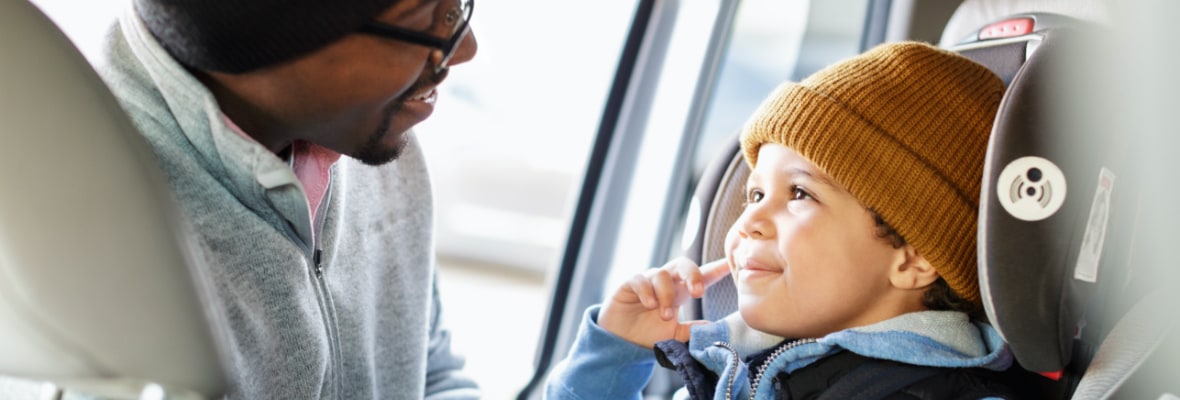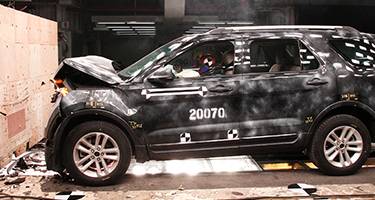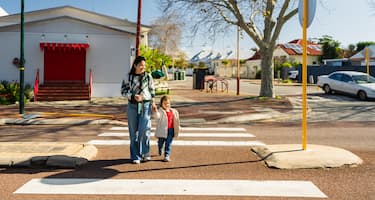In Australia, your child needs to sit in either a rear-facing child car seat, a forward-facing child car seat, a booster seat, or an adult seat belt when travelling in the car.
The use of child seats or restraints is regulated by national car seat laws, while state and territory road authorities ensure that all car seats are installed correctly, properly fastened, and adjusted to fit your child.
Approved and properly fitted child restraints greatly reduce the risk of injury in an accidents occurring, with research from the Queensland Family and Child Commission finding that the risk of death or serious injury may be reduced by up to 70% [1].
What You Need To Know
Your child’s car seat must be:
- Appropriate for your child’s size.
- Correctly installed in your car.
- Properly fastened and adjusted to fit your child.
- Meet Australian/New Zealand standards.
National Child Car Seat Laws

Based on the child’s age and height your child’s car seat must meet these minimum legal requirements:
Children up to the age of six months must be secured in an approved rear-facing car seat with an inbuilt harness.
Children aged from six months up to four years old must be secured in a rear-facing or forward-facing child car seat with an inbuilt harness.
Children aged four years up to seven years old must be secured in a forward-facing approved car seat with an inbuilt harness or booster seat or cushion with an adult lap-sash seatbelt or child safety harness.
Children aged seven years up to 16 years old are at the right age to use an approved booster seat (depending on their size) with an adult lap-sash seatbelt or child safety harness.
Or, if your child has moved out of the booster seat age, they can sit in a standard seat with an adult seat belt that is properly adjusted and fastened. The suggested minimum height to use an adult seat belt is 145cm [2].
It’s important to consider both your child’s size and age when putting them into a car seat. Therefore, child restraint laws will also allow for:
Children who are too small for the car seat specified for their age group can stay in their current seat until they grow enough to fit the seat in the next age group
Children who are too big for the car seat specified for their age group can move up to the seat specified for the next age group.
It’s also important to note that all national child car seat laws are also adhered to in all states and territories across Australia.
Safety Standards for Car Seats

According to child restraint laws, all children’s car seats bought or sold in Australia must meet the Australia/New Zealand Standard AS/NZS 1754 [3].
You can find the standards label on the packaging of new car seats and the car seats themselves. This label will signify the approval of the car seat and when it was manufactured.
Another one of our safety tips for families is to make sure to only use accessories with car seats that are approved for use.
Travelling in the Front Seat

Children under four years old cannot travel in the front seat of a vehicle with two or more rows.
Children aged from four years old and under seven years old cannot travel in the front seat of a vehicle with two or more rows unless all other back seats are occupied by children younger than seven years in an approved child restraint or booster seat.
The back row of seats is the safest place to seat your children while in the car and it is strongly recommended that children up to and including 12 years of age always sit in the back row of your car.
Fitting Children’s Car Seats into the Car

To ensure your child’s safety it’s important their car seat is fitted and installed correctly in your car. You can even have the seat professionally fitted and it’s always a good idea to make sure that the seat will fit in your car before you buy it.
Here are some handy tips for when you next have to choose, install, and adjust your children’s car seats:
Choose the correct anchorage points – you can check whether your child’s car seat is compatible with ISOFIX and what cars have ISOFIX in Australia.
Know how to firmly position your child, their car seat, and harness.
Regularly check and adjust the seat’s harness.
Mark your child’s shoulder height as they grow.
Moving Your Child Into Their Next Car Seat

Each child differs in size and weight and it’s common for siblings to be of different ages when they grow out of car seats and move to the next style.
While the recommended age for your child to move from a rear-facing car seat to a forward-facing car seat is between six to 12 months, it’s more important they can hold their head up or when your child has passed the upper shoulder marks.
Your child should move from a forward-facing seat to a booster seat when their shoulders no longer comfortably fit within the car seat, their eye level is higher than the back of the seat and the insertion slots for the straps are below the child’s shoulders.
Children are ready to be moved into a booster seat when they pass the upper shoulder marks of the car seat. This can include either of the two standard types of booster seats: high back and backless. It’s important to note that this may not occur at the expected booster seat age.
Children are ready to move from their booster seat age to a seatbelt when their shoulders no longer fit comfortably within the booster seat, their eye level is higher than the back of the booster seat, or when their shoulders have passed the upper marks of the booster seat.
Now you can test whether your child is ready to move to a seatbelt with these five simple steps:
Sit with their back against the back seat
Bend their knees comfortably over the front of the seat cushion
Sit with the sash belt across their mid-shoulder
Sit with the lap belt across the top of their thighs
Remain in this position for the whole trip






